Affiliate disclosure: This post may contain affiliate links. Please see our Privacy Policy.
Rose hip syrup is easy to make with just two main ingredients: rose hips and sugar (or honey, if you prefer!). Whether drizzled over pancakes, stirred into cocktails, or taken as a natural remedy for immune support, this syrup will become your new fall favorite.

Rose hips are the bright red fruits of roses, either wild or cultivated. The result of a blossom and a bee on a warm summer day.
They appear in hedgerows and gardens during the late summer and autumn months, and they’re one of the most popular wild edible foods to forage in the fall. Once the flowers have passed, the rose hips ripen and become a beautiful, ruby-colored fruit, full of tiny seeds.
Inside the fruits, there are seeds and a fine, furry coating, which isn’t great for eating (it makes your throat itch), but that part is strained out when making syrup.
Rose hips are easy to spot and can be found throughout the fall, often into early winter. Look for plump, ripe hips that are bright red and free from mold or shriveling. Avoid any that are overripe or shriveled, as they won’t yield the best syrup.
If you’re not sure on your ID, take a look at my guide to foraging rose hips.
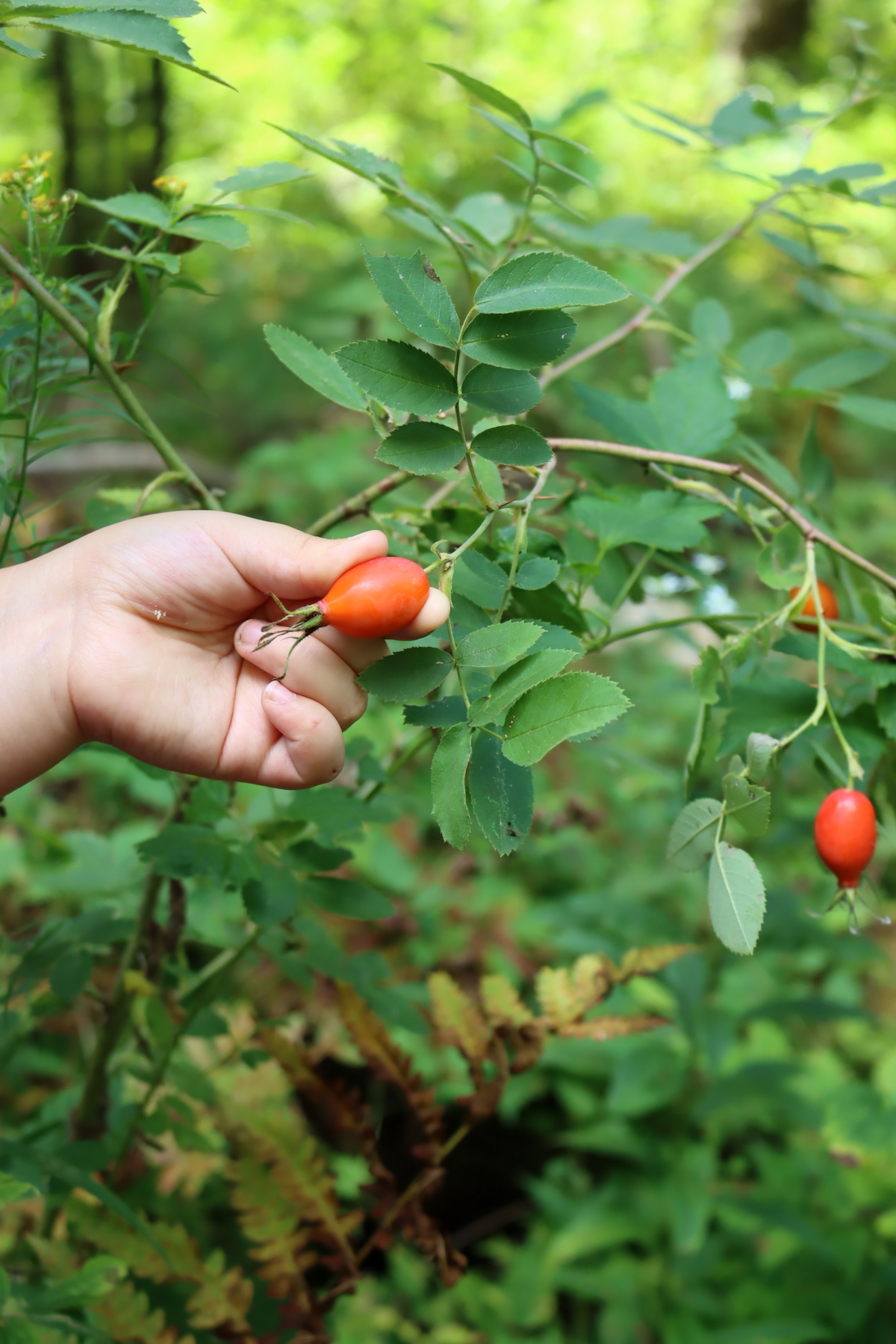
Benefits of Rose Hip Syrup
Rose hips are incredibly nutrient-dense, offering more than just vitamin C. They also provide vitamins A, D, and E, along with powerful antioxidants, making them an excellent tonic for immune support, especially as the weather turns colder.
This syrup is not just a great addition to your pantry; it’s also a medicinal powerhouse.
Historically, rose hip syrup has been used to treat colds and flu, and it’s still a favorite remedy today.
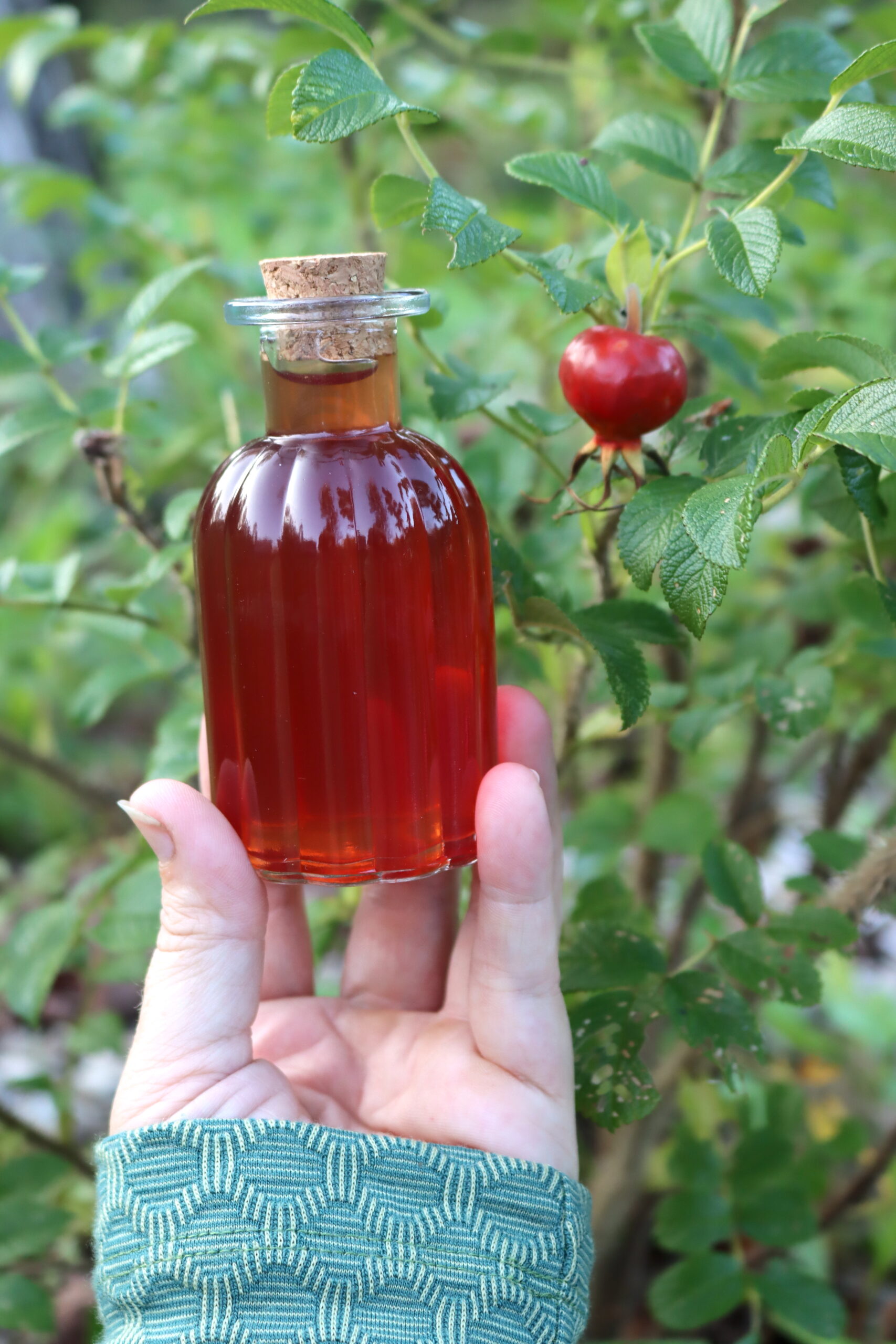
Ingredients for Rose Hip Syrup
The recipe is proportional by weight in a 3:2:1 ratio. Three parts water, two parts hips, and 1 part sugar. You can scale the recipe to suit your needs.
To make a simple small batch of rose hip syrup, you’ll need:
- 750 ml water (or about 3 cups)
- 500 grams fresh rose hips (or 250 grams dried rose hips)
- 250 grams sugar (you can adjust based on your preferred sweetness; if you’d like, you can substitute with honey for a different flavor profile)
Both fresh and dried rose hips have their merits: fresh hips tend to offer a brighter, more vibrant flavor, while dried rose hips have a more concentrated taste, which can result in a deeper syrup.
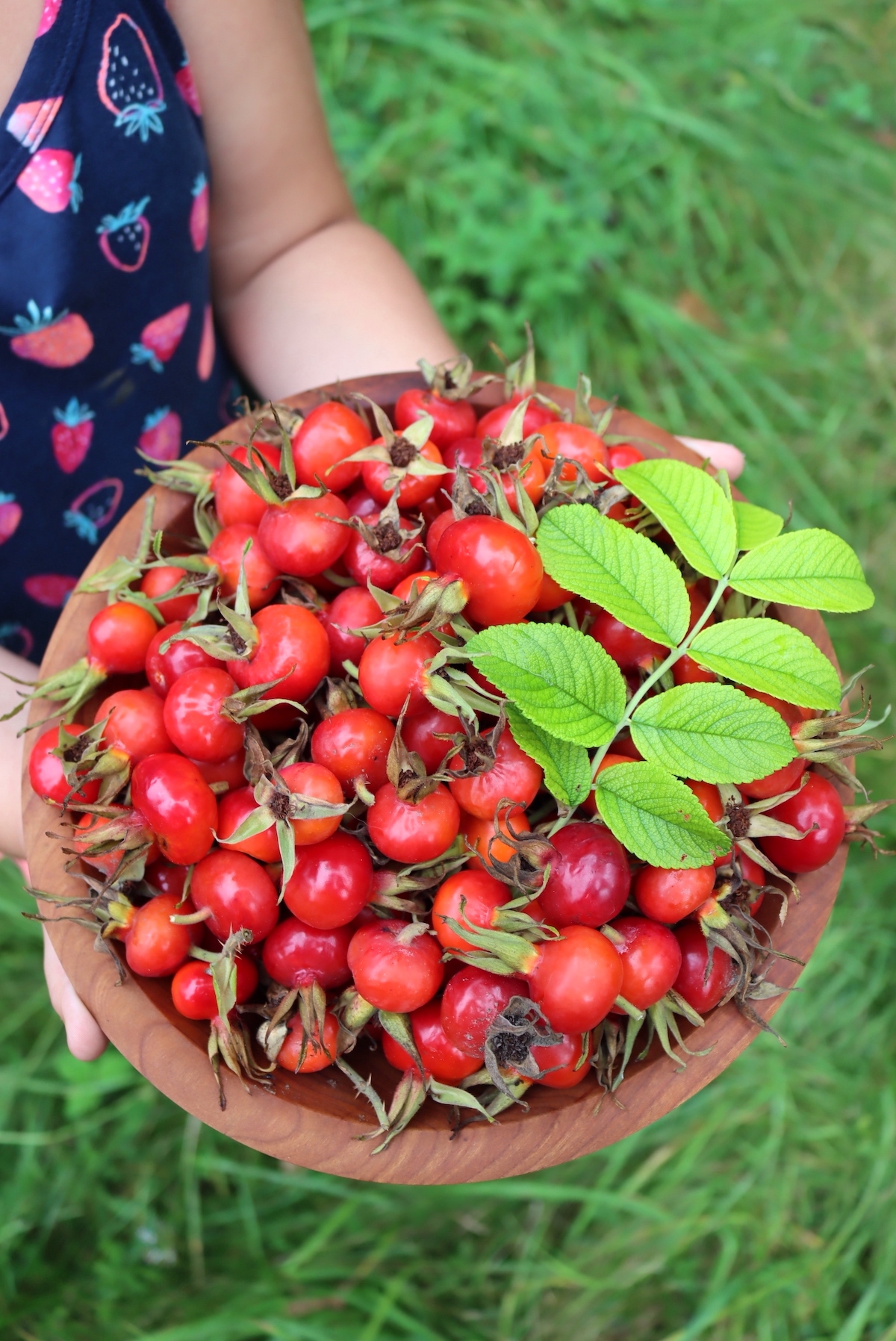
You can use sugar or honey to make the syrup. Sugar gives a clean flavor, while honey will lend a lovely floral note to the syrup, giving it a more complex and aromatic sweetness.
Water helps extract the flavors from the rose hips, and you’re cooking them in water to get them to break down and release their flavor and nutrients. I tend to make my rose hip syrup with just honey or sugar, the hips themselves and water, but you can also add other things to bring out their flavor.
You can replace a portion of the water with up to 1/2 cup of apple cider vinegar, which introduces a tangy balance to the syrup’s sweetness.
To further enhance the syrup’s flavor, you might choose to infuse it with additional ingredients like fresh ginger—1 or 2 slices will give the syrup a warming, spicy kick. A teaspoon or two of lemon juice can also be added for a zesty citrus touch, brightening the syrup.
For those who like a bit of spice, consider incorporating whole cinnamon sticks, cloves, or star anise during the simmering process. These optional ingredients allow you to tailor the syrup to your own taste preferences, whether you want something fruity and sweet, tangy, or warmly spiced.
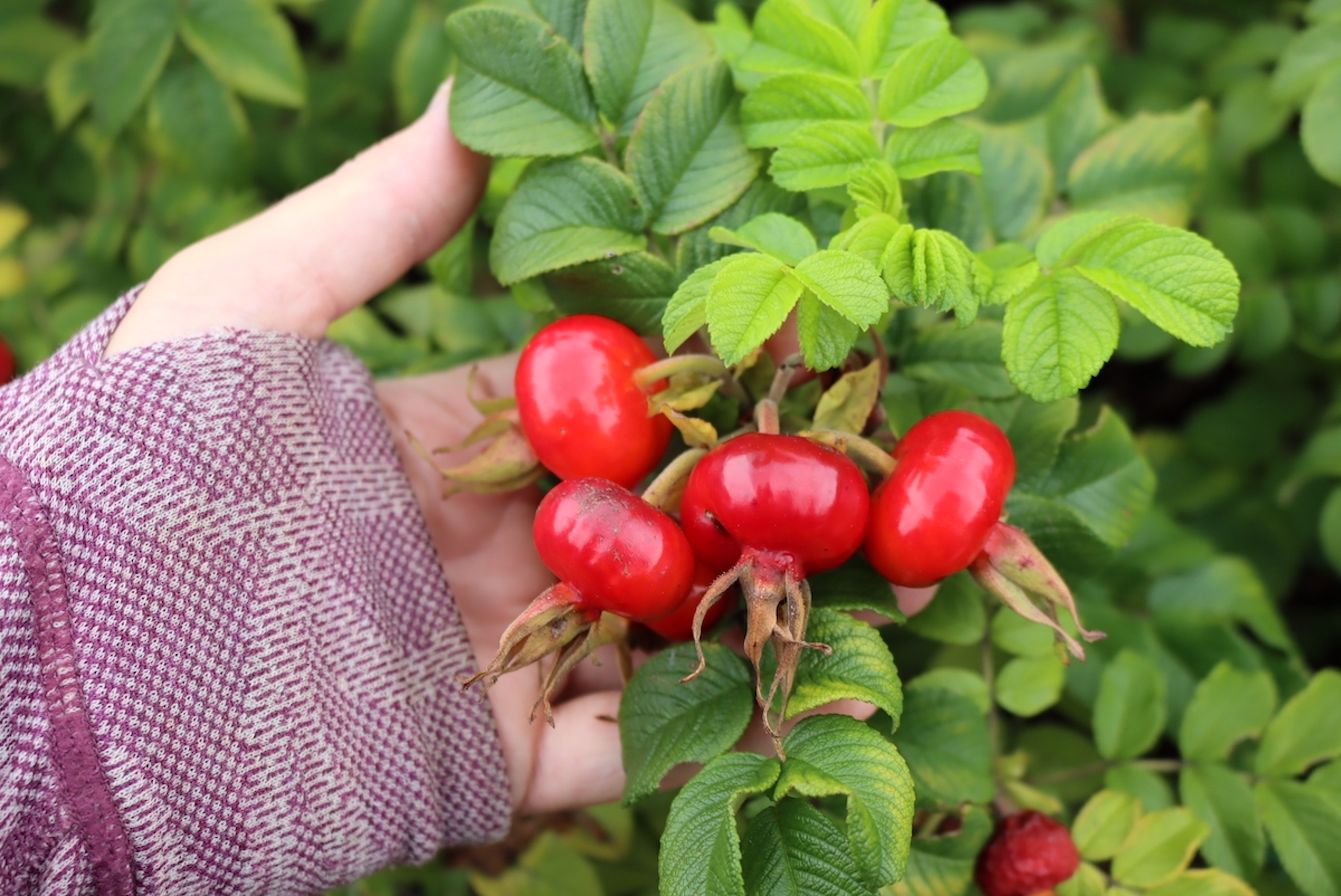
How to Make Rose Hip Syrup
To begin making rosehip syrup, start by cutting off the ends of the rose hips, where the flower once bloomed, and rinse them thoroughly. There’s no need to remove the seeds or the hairy interior at this stage, as these will be strained out later.
If you’re using dried rose hips, simply skip the rinsing and move on to the next step.
Next, chop the rose hips into smaller pieces using a knife, or if you have a food processor, pulse them a few times to break them up. This step is important because it helps release the juice during the cooking process.
You can also use an immersion blender as the rosehips cook, and this can help with dried rose hips, which need a bit of softening before they can break up.
Once prepared, place the rose hips into a large pot and add 750 ml of water. Bring the mixture to a boil, then reduce the heat and let it simmer for 15-20 minutes, or until the water has reduced by half and has become a concentrated rosehip tea.
Once the rose hips have softened and the liquid has reduced, it’s time to strain out the solids.
Use a fine mesh sieve lined with muslin or cheesecloth to strain the liquid, ensuring you remove the fine hairs from the rose hips, as they can be irritating if consumed. I recommend straining the mixture twice to ensure the syrup is smooth and clear.
After straining, stir the sugar into the rose hip liquid and heat gently over medium heat, stirring until the sugar completely dissolves. Once dissolved, bring the mixture to a boil and let it cook for an additional 3 minutes, stirring occasionally to prevent it from sticking to the bottom of the pot.
Once the syrup has boiled, carefully pour it into sterilized bottles or jars. You can store the syrup in a cool, dark place for up to 6 months, and once opened, keep it in the refrigerator, where it will last for a few weeks.
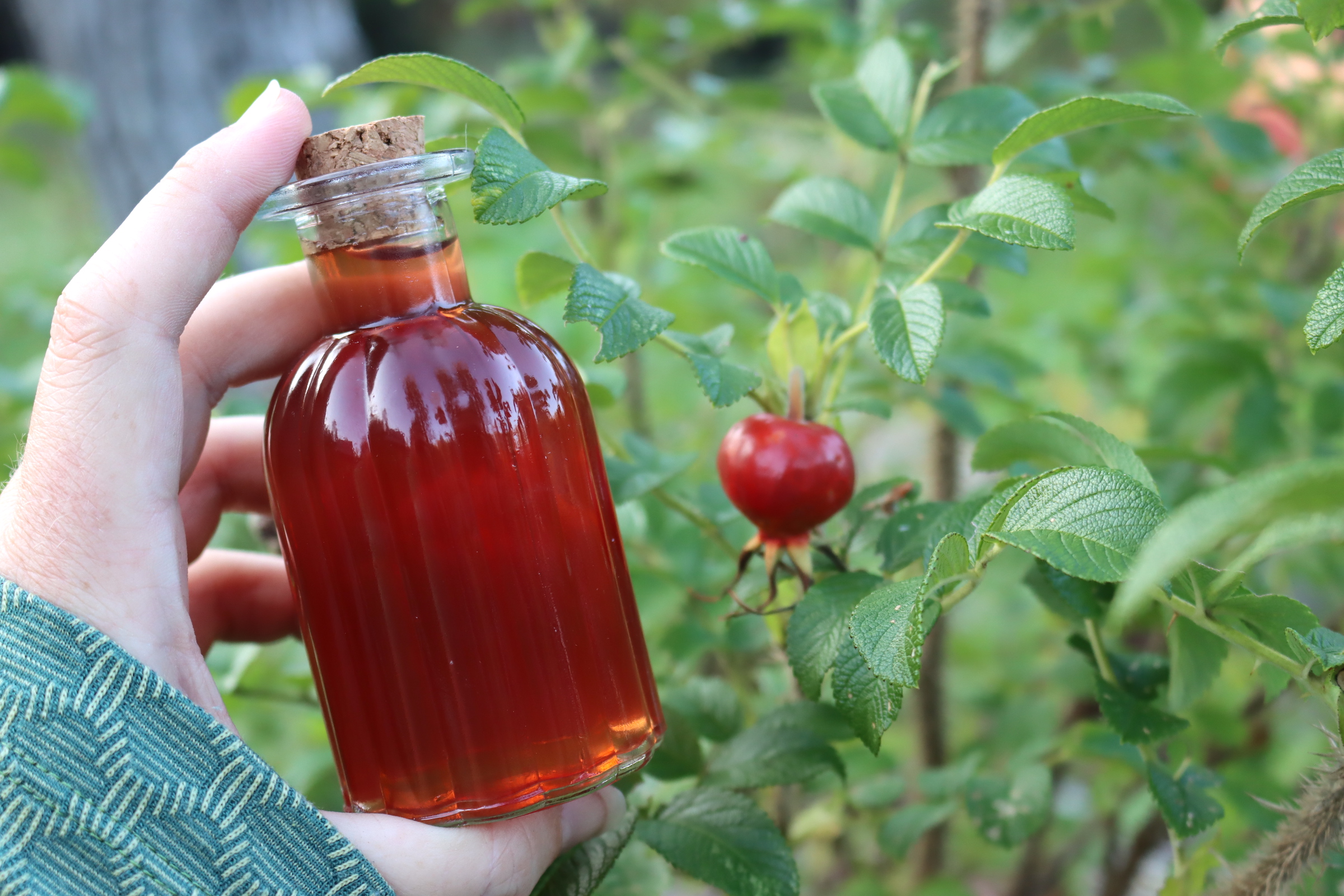
How to Use Rose Hip Syrup
Once you’ve made your rose hip syrup, there are plenty of delicious ways to use it. Here are just a few ideas:
For Medicinal Use:
- Boost Your Immunity: Rose hip syrup is a natural source of vitamin C, which supports the immune system, especially during the colder months. Take 1-2 tablespoons per day during cold and flu season to help ward off illness.
- Soothing for Coughs and Sore Throats: Rose hips have long been used in folk medicine to treat colds, coughs, and sore throats. If you’re feeling under the weather, take a spoonful of rose hip syrup for its soothing and immune-boosting properties.
For Culinary Use:
- As a Sweetener: Use rose hip syrup just like any other syrup. Drizzle it over pancakes, waffles, or French toast in place of maple syrup for a fall twist.
- Dessert Topping: Pour over ice cream, Greek yogurt, or puddings for a quick and delicious dessert.
- Cocktails: Rose hip syrup can be a unique ingredient in cocktails. Add it to a rose hip martini, or stir it into a gin and tonic for a refreshing, autumn-inspired drink.
- As a Drink: Dilute with soda water for a simple, refreshing beverage — perfect for hot days or when you just want something light.

Rose Hip Syrup
Ingredients
- 3 cups water
- 4 cups fresh rose hips, 500 g fresh, or about 1 cup dried rose hips (250 g)
- 1 1/4 cup sugar, you can adjust based on your preferred sweetness; if you'd like, you can substitute with honey for a different flavor profile
Instructions
- Prepare the Rose Hips: Start by cutting off the ends of the rose hips (where the flower once bloomed), then rinse them well. You don’t need to remove the seeds or hairy interior, as straining them later will take care of this. If using dried rose hips, skip the rinsing and go straight to the next step.
- Break Them Down: Chop the rose hips into smaller pieces using a knife, or if you have a food processor, pulse them a few times to break them up. This helps to release the juice during the cooking process.
- Simmer the Rose Hips: In a large pot, combine the rose hips with 3 cups (750 ml) of water. Bring to a boil, then reduce the heat and simmer for about 15-20 minutes. You want the water to reduce by at least half and become a rich, concentrated rose hip tea.
- Strain the Mixture: Once the rose hips have softened and the water has reduced, it’s time to strain out the solids. Strain the liquid through a fine mesh sieve lined with muslin or cheesecloth. This is an important step to remove the fine hairs from the rose hips, which can be irritating if consumed. I recommend straining it twice to ensure a smooth, clear syrup.
- Sweeten the Syrup: Add the sugar to the pot with the rose hip liquid, and heat gently over medium heat, stirring until the sugar has completely dissolved. Once dissolved, increase the heat and bring the mixture to a boil. Let it boil for 3 minutes, stirring occasionally. If using raw honey, just stir the honey into the warm rose hip tea, without heating.
- Bottle the Syrup: After boiling, carefully pour the syrup into sterilized bottles or jars. You can store the syrup in a cool, dark place for up to 6 months. Once opened, keep it in the refrigerator for up to a few weeks.
Notes
Nutrition
Nutrition information is automatically calculated, so should only be used as an approximation.
Rose Hip Recipes
Looking for more ways to use rose hips?
- Rose Hip Wine
- Rose Hip Tincture (coming soon)
- Rose Hip Jelly

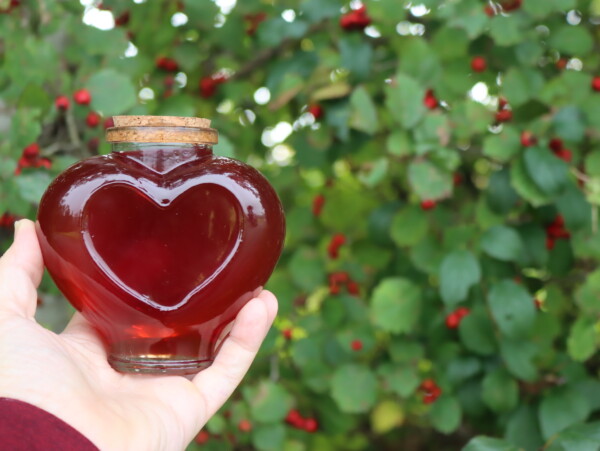
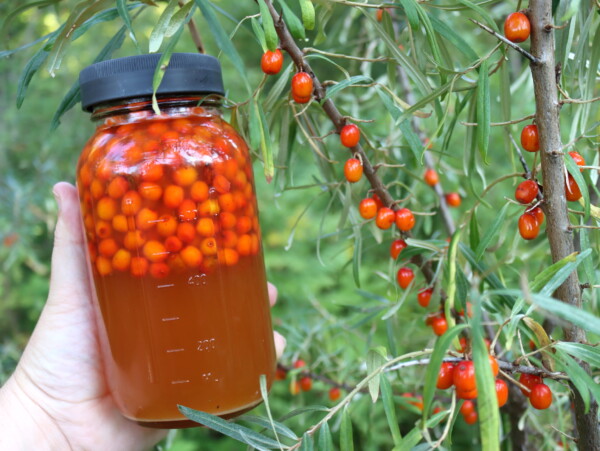
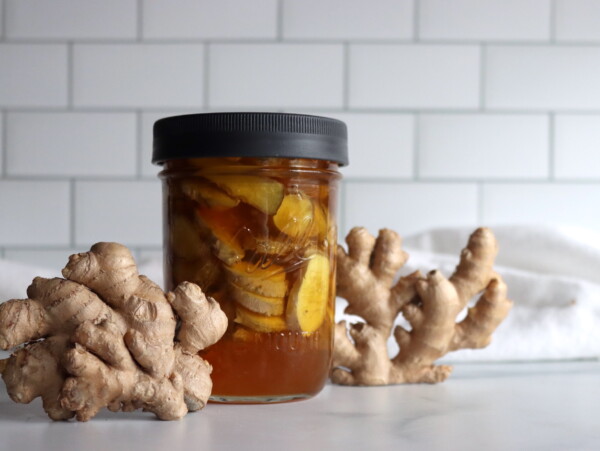
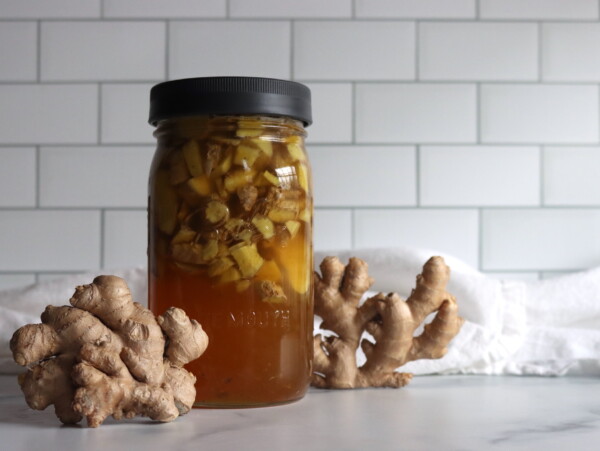
My rose bushes never get hips that big! What sort of rose is that? I would like to plant some.. We have wild roses, with big pink blossoms that have little fragrance, and also the multi-floral rose that has scads of fragrant small white blossoms, and thorns like knives and are so horribly invasive, butthe hips on both of these are less than a 1/2 inch long. Some huge hips like that you show would be gret.
Thanks
Meredith
Those hips are on Rugosa roses, and they always produce a good crop of delicious and gigantic hips. They’re incredibly fragrant too. Here’s some of that type: https://naturehills.com/collections/rugosa-roses
Most are the old fashioned “single” roses that are a bit more delicate as a flower than the “double” roses commonly grown today. They bloom and the flowers each last maybe 2 days, then lose their petals. But the bees love them so much they get pollinated quickly, so they don’t need to hold on the plant long to make hips.
Thanks for the good information! I appreciate the reply! I love your useful and accurate content, and refer to your website for recipes, gardening tips, and general inspiration.
Regards Meredith